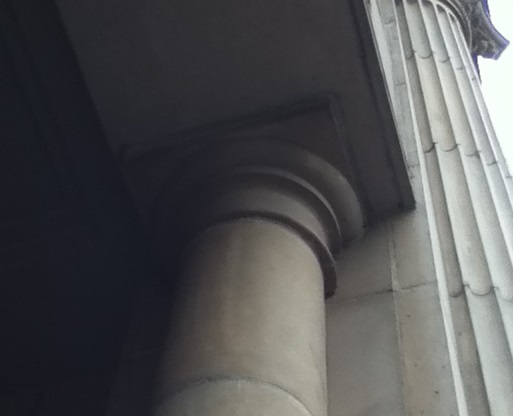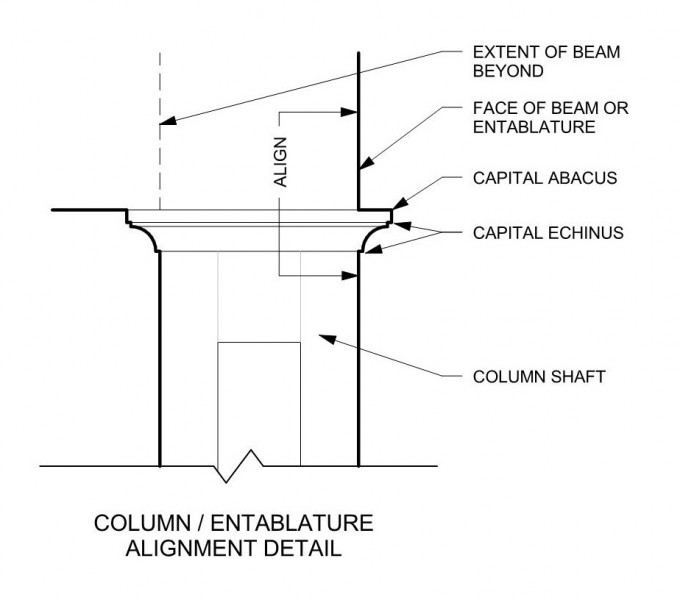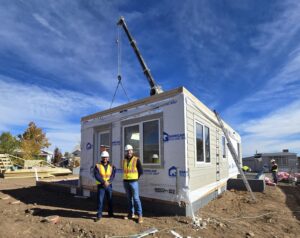One of the most frequently made mistakes in traditional design is the misalignment of a column with regards to the beam or entablature it is supporting. The face of the beam (on both the inside and the outside) should align with the slenderest part of the column shaft.
The two things that make this a solid rule are simple structural considerations and volume of historical evidence. When ancient stone was spanning from column to column it made sense that the beam would be centered on the column and that all load was being focused on that central portion of the capital which was directly over the shaft below. The flourish at the top of the capital therefore had no structural duties at all and could remain decorative and extend out past the face of the beam above. Though interpretation and execution of classical orders and detailing varies widely over the centuries this basic structural concern could never be overlooked and that is why it is so hard to find any examples of classical architecture that violate this rule.
Modern traditional designs which typically do not include classical orders and detailing should still follow the rule, though they often don’t. It took me ten minutes to get up from my desk, walk outside and find this classical pilaster example where the column location is not only off, but it is off by a different amount on both sides…
Getting this detail right is very easy to do but the path to calculating the width of the beam may seem counterintuitive. In traditional design the height of the column determines the width, which per our rule then sets the width of the beam. Typically this width is greater than the width of the actual beam required, so some furring and decorative cladding are required to bulk up the beam. This cladding also provides the opportunity to hide the straps, hangers and other connections at the beam, allowing them to be whatever is most economical. Below is an example of a more modern boxed wood column and beam elevation where the rule is applied and looks great.
The bottom line is these are the kinds of details your architect needs to know in order to deliver a traditional design…so hire EVstudio!












